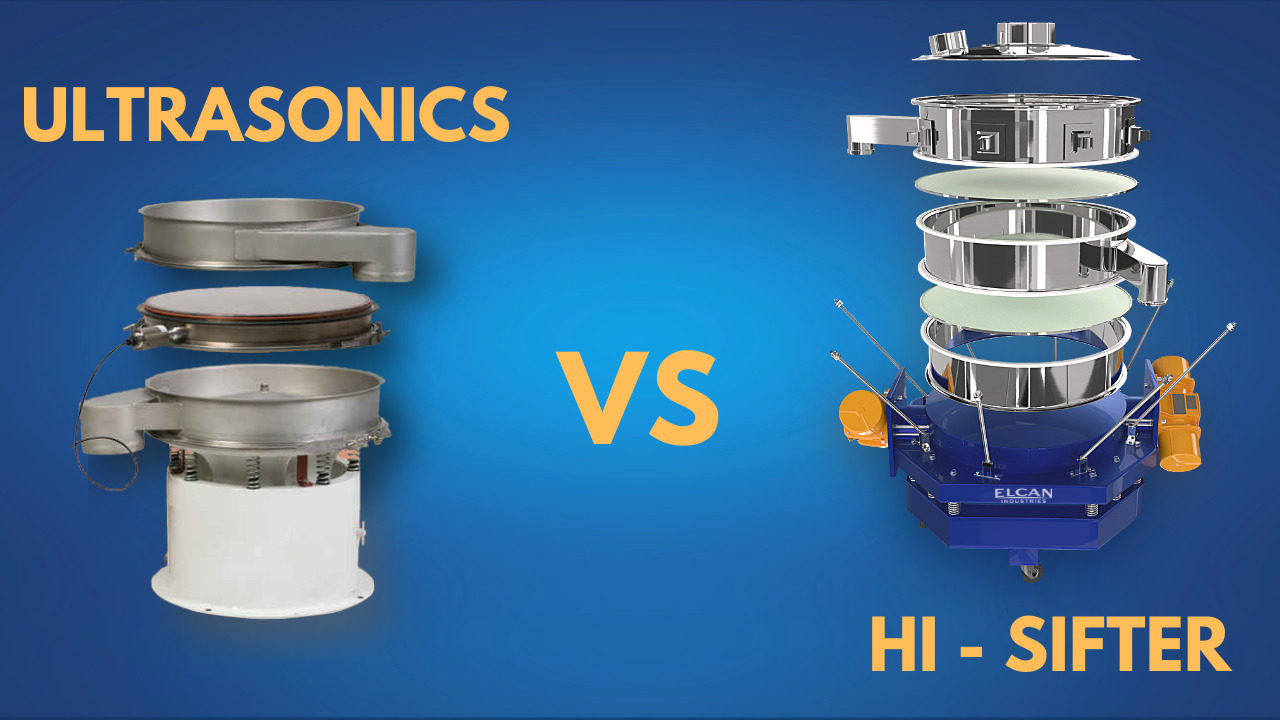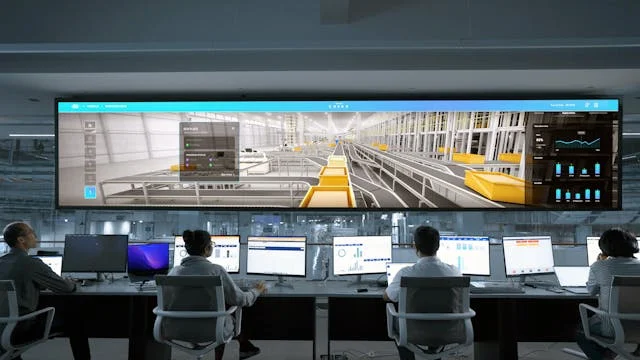Ultrasonic Sieving Machines: The Future of Precision in Material Processing
Introduction
Ultrasonic sieving machines are revolutionary tools in modern material processing, designed to meet the highest standards of precision and efficiency. By using ultrasonic vibrations, these machines provide an innovative solution for industries that require ultra-fine sieving and separation, particularly in pharmaceuticals, food processing, chemicals, and other high-demand sectors. With advanced capabilities that prevent clogging and enhance throughput, ultrasonic sieving machines are transforming how companies manage materials and maintain quality.
An ultrasonic sieving machine uses high-frequency sound waves to induce ultrasonic vibrations on the mesh screen, helping to prevent clogging and increase sieving efficiency. The ultrasonic vibrations break up particles that tend to stick together, ensuring that even the finest powders pass through the sieve without building up on the mesh surface.
These machines are ideal for sieving:
- Fine powders and granules: For instance, sieving flour, spices, and powdered medications.
- Sticky or static-prone materials: Materials like powdered sugar or certain pharmaceuticals that may adhere to the mesh.
The ultrasonic technology can be applied to standard vibrating sieve machines, effectively upgrading traditional sieving systems with modern capabilities that address common issues like screen blinding and reduced efficiency.
How Does Ultrasonic Sieving Technology Work?
The ultrasonic sieving process relies on a generator that transforms electrical energy into high-frequency ultrasonic waves, which are then transferred to a transducer attached to the sieve mesh. This creates ultrasonic vibrations directly on the screen, which causes particles to break apart and pass through the mesh more easily. The continuous vibrations prevent particle accumulation, significantly improving efficiency, accuracy, and consistency.
Advantages of Ultrasonic Sieving Machines
Ultrasonic sieving machines offer unique advantages over conventional sieving methods, which makes them an invaluable tool for precision-oriented industries:
- Enhanced Sieving Efficiency: The ultrasonic waves ensure that fine powders pass through the mesh without clogging, boosting productivity and minimizing downtime.
- Improved Product Quality: With consistent particle sizes and minimal contamination risks, ultrasonic sieving enhances the quality and reliability of the final product.
- Reduced Downtime: Since the ultrasonic vibrations keep the mesh clean, these machines require less frequent stoppages for cleaning and maintenance.
- Energy Efficiency: Ultrasonic sieving machines often use less power than traditional options, helping companies reduce operational costs and energy consumption.
- Enhanced Safety and Hygiene: Ultrasonic sieving systems minimize dust generation and screen build-up, crucial for industries with strict hygiene standards, such as food and pharmaceuticals.
Applications Across Different Industries
The ultrasonic sieving machine is versatile, catering to a range of industries with specific processing needs.
- Pharmaceutical Industry: The pharmaceutical sector requires precise particle size control, especially for fine powders used in tablet production. Ultrasonic sieving machines provide the necessary accuracy, ensuring consistency and purity while meeting strict regulatory standards.
- Food and Beverage Industry: In food processing, ultrasonic sieving is used to separate powders like flour, cocoa, and spices without clogging, ensuring consistent texture and quality in the final product.
- Chemical Industry: Chemicals, especially powders with adhesive properties, benefit significantly from ultrasonic sieving. The machine allows for clean, precise separation, preventing contamination and maintaining uniform particle sizes.
- Cosmetics Industry: Ultrasonic sieving is increasingly popular in cosmetics, where powders must be ultra-fine for smooth application. Products like face powders and blush benefit from the machine’s ability to keep particles consistent.
Key Features of Ultrasonic Sieving Machines
When selecting an ultrasonic sieving machine, it’s essential to evaluate specific features to ensure optimal performance:
- Adjustable Frequency: Many ultrasonic sieving machines allow the frequency to be adjusted to suit different materials, providing flexibility in handling a variety of powders and particles.
- Stainless Steel Construction: To meet stringent hygiene standards and offer durability, ultrasonic sieving machines are typically made from high-grade stainless steel. This makes them easy to clean and corrosion-resistant.
- Automatic Frequency Adjustment: Some machines come with automatic frequency tuning, which adapts the ultrasonic frequency based on the material’s properties, enhancing precision and efficiency.
- Noise Reduction Features: Ultrasonic sieving machines often operate more quietly than traditional vibrating screens, making them more suitable for environments that prioritize noise control.
- Customizable Screen Sizes: Many models offer interchangeable screens, allowing for easy mesh adjustments to match various particle sizes and maintain efficiency across different materials.
Comparing Ultrasonic Sieving to Traditional Sieving Methods
Ultrasonic sieving machines stand out from traditional sieving machines in several ways:
- Clog Prevention: The primary advantage of ultrasonic sieving is the prevention of clogging, which is common in traditional sieving machines, especially with fine or sticky powders.
- Enhanced Sieving Rate: Ultrasonic machines process material more quickly and with greater precision, thanks to the continuous vibrations that prevent particle accumulation.
- Higher Accuracy: The ultrasonic vibrations ensure that particles pass through the sieve more consistently, maintaining a higher level of accuracy than traditional sieving.
- Extended Screen Life: Traditional sieving screens can wear out faster due to constant cleaning and mechanical friction, whereas ultrasonic machines often reduce wear and prolong screen life by keeping the screen cleaner.
How to Maintain an Ultrasonic Sieving Machine
Maintaining an ultrasonic sieving machine is crucial for sustaining high performance and longevity. Here are a few maintenance tips:
- Regular Cleaning: Although the ultrasonic vibrations help keep the screen clear, periodic cleaning of the machine, especially in the food and pharmaceutical industries, is still essential for hygiene.
- Checking Ultrasonic Generators and Transducers: Routine inspection of the ultrasonic components ensures the machine operates effectively, as wear or faults in these parts can impact the sieving quality.
- Screen Inspections: Although ultrasonic sieving machines reduce wear, inspecting and replacing screens periodically helps maintain consistent results.
- Proper Lubrication: Ultrasonic sieving machines have fewer mechanical parts, but lubricating those parts as required helps reduce friction and prolong component lifespan.
Innovations in Ultrasonic Sieving Technology
With continuous advancements in technology, ultrasonic sieving machines are becoming increasingly sophisticated:
- Real-Time Monitoring: Some modern ultrasonic sieving machines come with monitoring systems that track the performance of ultrasonic frequencies, vibration levels, and material flow, ensuring optimum conditions at all times.
- Automated Controls: Newer machines integrate automated controls and remote management, enabling users to adjust settings from a computer or mobile device for ease of operation.
- Energy-Saving Features: Advances in power efficiency allow modern ultrasonic sieving machines to operate with minimal energy consumption, aligning with sustainable practices.
- Modular Designs: Modular components, such as detachable screens and ultrasonic transducers, make it easier to adjust and maintain machines, providing greater flexibility.
Selecting the Right Ultrasonic Sieving Machine for Your Needs
Choosing an ultrasonic sieving machine requires understanding your specific operational requirements:
- Material Properties: Consider the type of material you’ll be sieving, as fine, sticky, or cohesive powders benefit significantly from ultrasonic technology.
- Industry Compliance: Ensure the machine meets industry-specific regulations, particularly for hygiene in food and pharmaceutical sectors.
- Capacity Requirements: Assess the volume of material to determine the throughput capacity that best suits your needs.
- Cost and ROI: The investment in an ultrasonic sieving machine should be evaluated based on factors like increased efficiency, reduced downtime, and potential labor savings.
Conclusion
Ultrasonic sieving machines represent a major advancement in material separation and quality control, offering unparalleled efficiency, precision, and versatility. These machines have proven invaluable across various industries where fine powders and cohesive materials must be handled with care, achieving consistently high quality and compliance. With ongoing technological advancements, ultrasonic sieving machines are set to become even more efficient, cost-effective, and adaptable, reinforcing their status as essential tools in modern manufacturing and processing. For companies focused on maximizing productivity and minimizing waste, ultrasonic sieving machines offer a robust solution to meet today’s demanding production standards.







